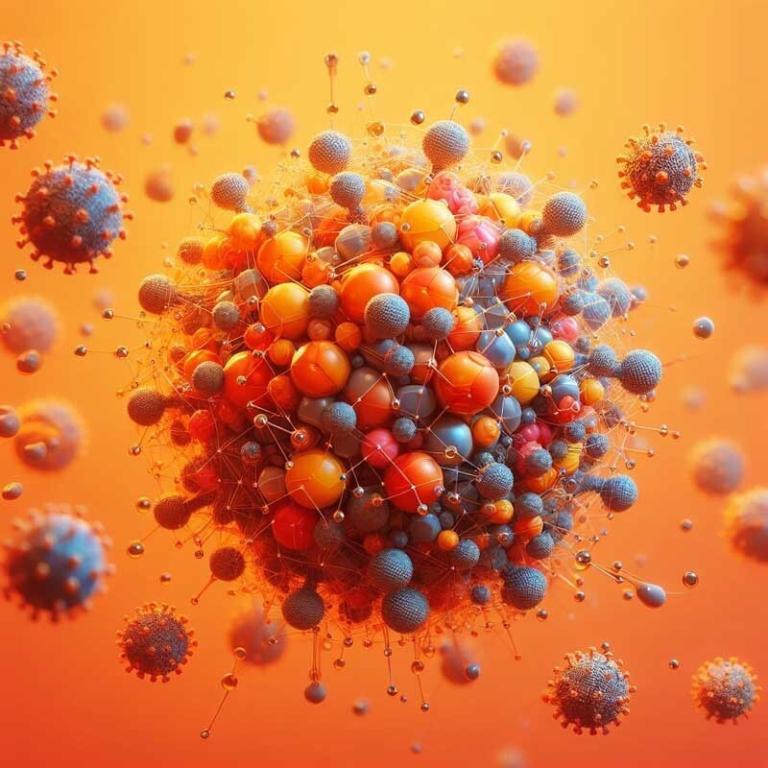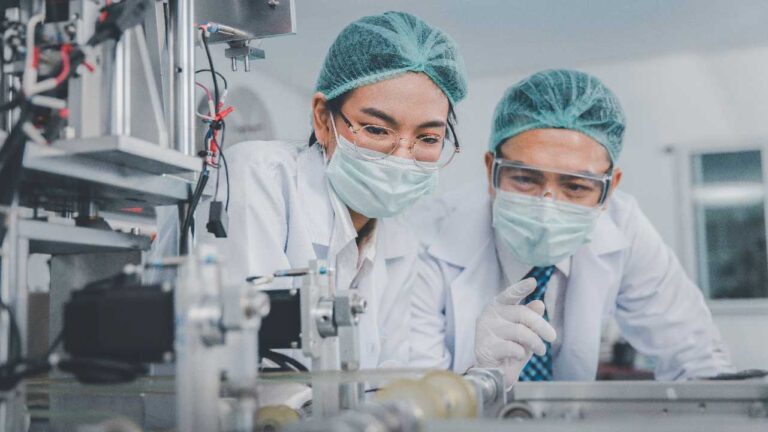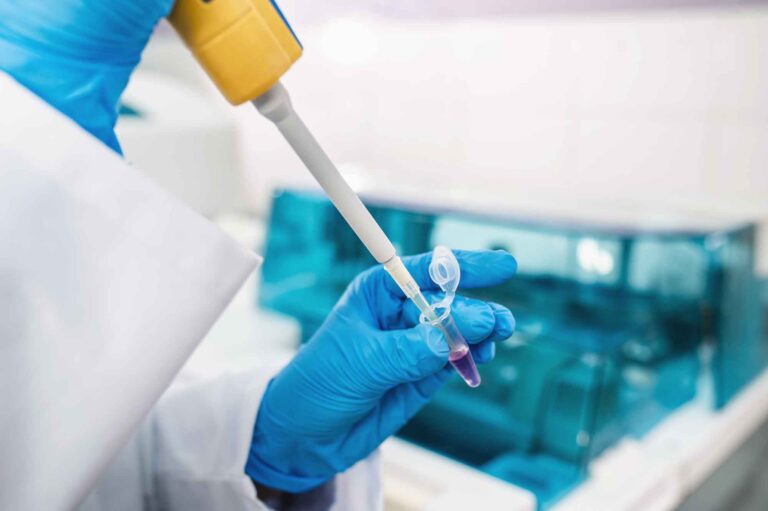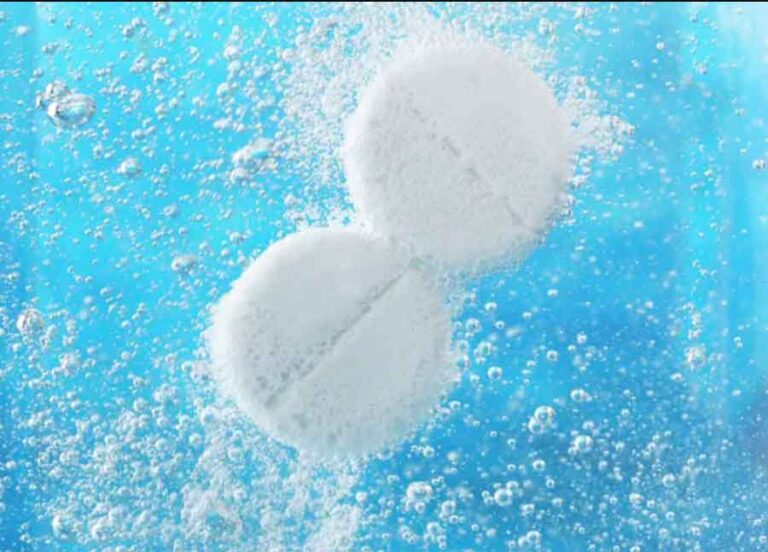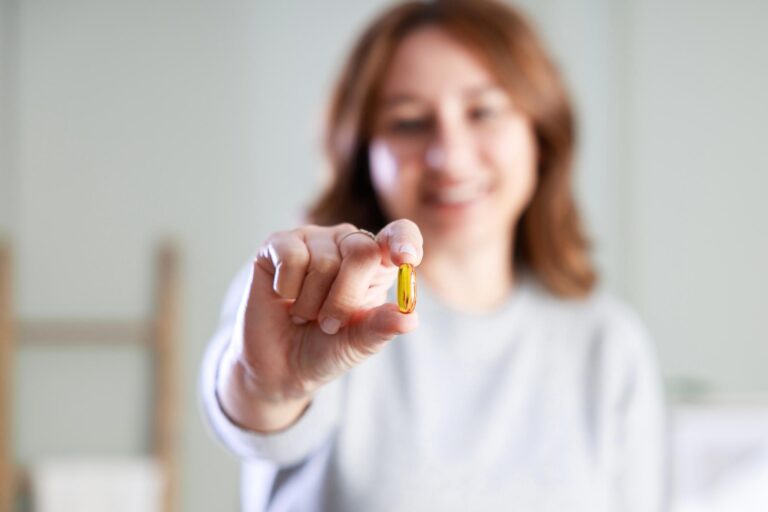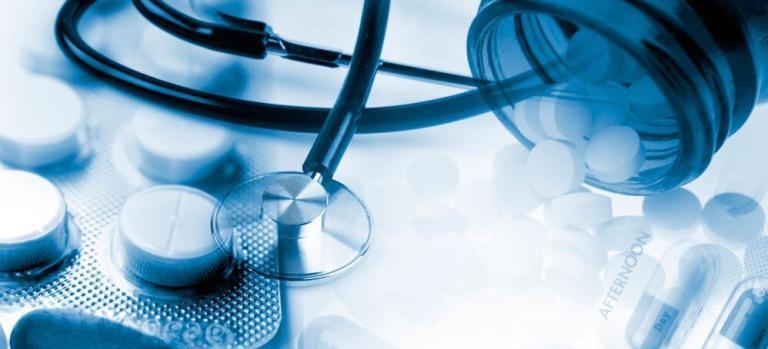Solid Lipid Nanoparticles (SLNs) are a form of nanocarrier system that are increasingly used in drug delivery. They are colloidal carriers developed in the last decade as an alternative system to the existing traditional carriers (emulsions, liposomes and polymeric nanoparticles). They are small, spherical particles with diameters typically between 10 to 1000 nanometers and enable controlled and site specific drug delivery.. The core of SLNs is made up of lipids that are solid at room and body temperatures, which can include materials like triglycerides, fatty acids, steroids, and waxes. This solid lipid core is surrounded by a layer of surfactants or emulsifiers to maintain stability and prevent the particles from clumping together.
The advantages of SLNs include:
- Enhanced stability for the active pharmaceutical ingredient.
- Controlled drug release, which can improve treatment effectiveness and minimize side effects.
- Potential for targeted delivery, allowing the drug to concentrate in specific tissues or cells.
- Biocompatibility and biodegradability, as they are composed of physiological lipids.
SLNs are explored for delivering various substances, including hydrophobic drugs, biotechnological products, and genetic materials like mRNA for vaccines. They are considered non-toxic and safe for pharmaceutical use.
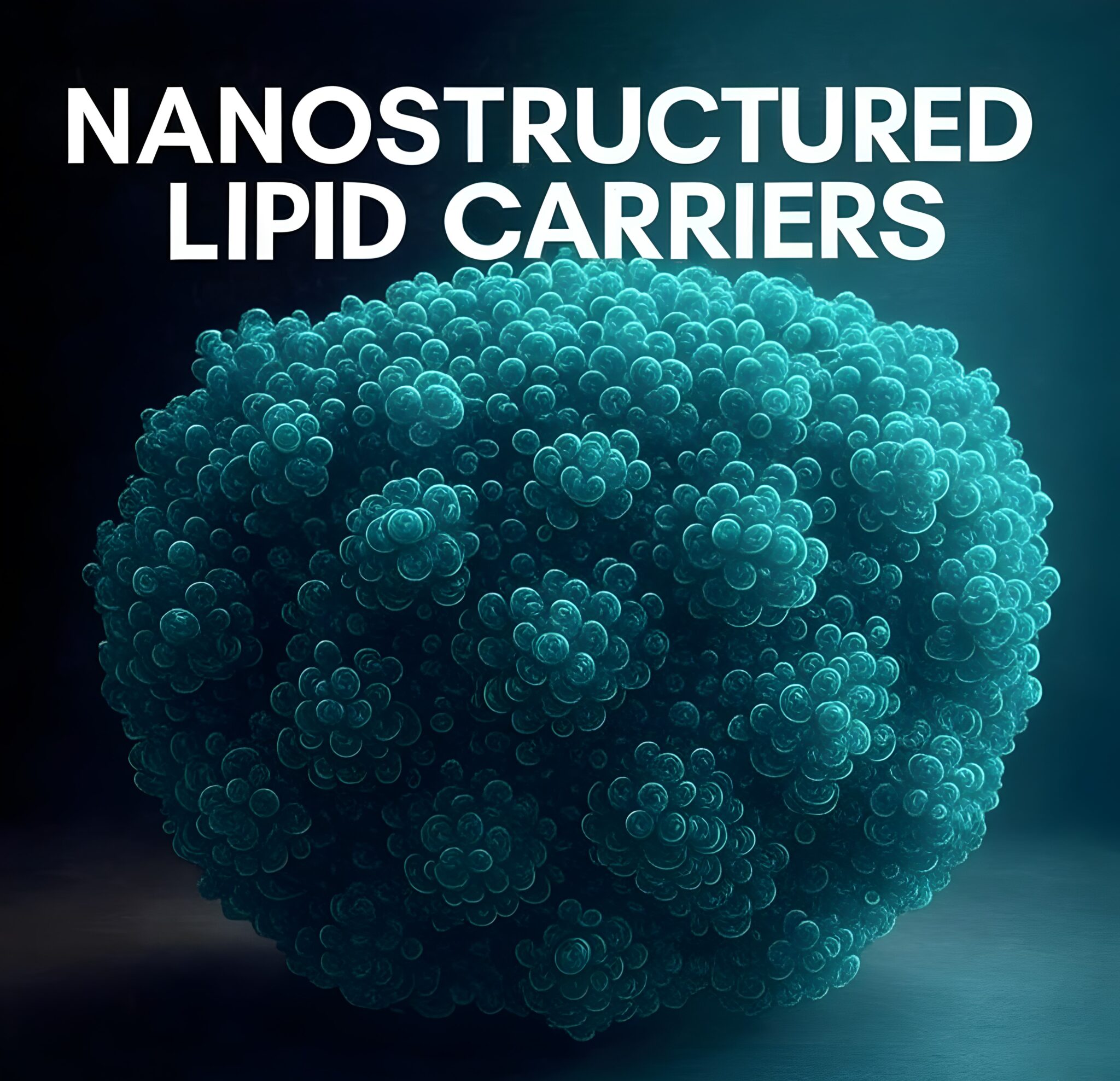
Manufacturing Process
The production of Solid Lipid Nanoparticles (SLNs) is a sophisticated and multi-faceted process that involves several critical steps, each designed to ensure the quality, efficacy, and safety of the final product. SLNs are a form of nanotechnology-based drug delivery system that offers numerous advantages over traditional forms of drug delivery, including improved bioavailability, controlled release, and targeted delivery of active pharmaceutical ingredients (APIs). Below is an in-depth exploration of the SLN manufacturing process:
SOLID LIPID NANOPARTICLE MANUFACTURING
1. Lipid Selection and Preparation
The initial stage in SLN manufacturing is the selection of appropriate lipids. This choice is pivotal as it determines the stability, compatibility with the API, and the release profile of the nanoparticles. Lipids are chosen based on their melting points and stability at body temperature to ensure that they remain solid at physiological conditions, thus forming the ‘solid’ lipid core of the nanoparticles. The lipids used are typically biocompatible and biodegradable materials such as triglycerides, fatty acids, or waxes. The purity and consistency of the lipid base are paramount, as they lay the groundwork for the quality of the SLNs produced.
2. Drug Encapsulation
Once the lipids are selected, the next step is to encapsulate the API within the lipid matrix. This process involves dissolving or dispersing the drug in the melted lipid, followed by solidification to trap the drug within the lipid matrix. Advanced techniques are employed to achieve high precision and efficiency in drug loading, ensuring that the desired amount of drug is securely encapsulated within each nanoparticle.
3. High-Precision Nano-Emulsification
Creating a nano-emulsion is a critical step in SLN production. This is achieved using high-shear mixers that blend the lipid phase containing the API with an aqueous phase containing surfactants. The result is a fine dispersion with a precise particle size distribution, which is essential for the success of the SLNs. The size of the particles is crucial as it affects the release rate of the drug and its distribution in the body.
4. Advanced Homogenization Techniques
High-pressure homogenization is then applied to the nano-emulsion. This process involves forcing the emulsion through a narrow gap under high pressure, which results in the formation of even smaller and more uniform nanoparticles. This step is fine-tuned to achieve uniformity and stability of the SLNs and can be scaled up from laboratory quantities to full commercial production without loss of product quality.
5. Rapid Cooling and Solidification
Following homogenization, the emulsion undergoes rapid cooling. This step is vital as it causes the lipid to solidify, thereby encapsulating the API within a solid structure. The rapid cooling ensures that the nanoparticles retain their size and shape, and the drug remains evenly distributed within the lipid matrix.
6. Ultrasonication Refinement
To further refine the particle size distribution and achieve the exact specifications required for the SLNs, ultrasonication is employed. This high-energy technique uses sound waves to break down any agglomerates and reduce the size of the particles to the nanometer scale.
7. Purification
The final step in the manufacturing process is the purification of the SLNs. This involves the removal of any unencapsulated drug, excess surfactants, and other impurities. Techniques such as centrifugation or filtration are commonly used for this purpose, resulting in a pure and concentrated SLN suspension.
PROPRIETARY METHOD
Stability Matrix
A unique aspect of SLN technology is the development of a stability matrix. This proprietary lipid matrix not only protects the API from degradation but also provides a controlled release mechanism. The release profile can be customized according to the therapeutic needs of the drug, allowing for sustained release over an extended period or targeted release at specific sites within the body.
Analytical Excellence
The quality of SLNs is ensured through rigorous analytical methods that are at the forefront of the industry. These methods assess each batch of SLNs for critical parameters such as size, charge, drug loading, and release profile. Techniques such as dynamic light scattering (DLS) for size measurement, zeta potential analysis for charge determination, and high-performance liquid chromatography (HPLC) for quantifying drug loading and release are commonly employed.
Advanced Pharmaceutical Applications Of Solid Lipid Nanoparticles
Advanced Pharmaceutical Applications Of Solid Lipid Nanoparticles
Solid Lipid Nanoparticles (SLNs) are at the vanguard of nanotechnology-based drug delivery systems, offering a suite of unique advantages for pharmaceutical applications. These nanoparticles are a form of advanced drug delivery system that has gained significant attention due to their potential to improve the bioavailability and efficacy of therapeutic agents.
Versatile Drug Carriers SLNs are highly versatile and can encapsulate a wide range of pharmaceutical compounds. They are capable of carrying lipophilic and hydrophilic drugs, peptides, proteins, and nucleic acids. This versatility is due to the unique structure of SLNs, which consists of a solid lipid core that can solubilize lipophilic drugs and a surfactant layer that can interact with hydrophilic substances.
Overcoming Biological Barriers One of the most significant benefits of SLNs is their ability to overcome biological barriers. They can be engineered to cross the blood-brain barrier, making them an invaluable tool for delivering drugs to the brain. This is particularly important for the treatment of neurological disorders, where many drugs cannot reach the brain due to the restrictive nature of the blood-brain barrier.
Co-delivery of Drugs SLNs also facilitate the co-delivery of multiple drugs, which is beneficial for combination therapies. In cancer treatment, for example, the co-delivery of chemotherapeutic agents can lead to a synergistic effect, potentially increasing the efficacy of the treatment while reducing side effects.
Diagnostic and Therapeutic Applications SLNs have the potential for diagnostic and therapeutic (theranostic) applications. They can be used to deliver imaging agents alongside therapeutic drugs, allowing for real-time monitoring of drug distribution and efficacy. This dual functionality makes SLNs a promising platform for personalized medicine.
Advancements in SLN Research Recent advancements in SLN research have focused on optimizing these nanoparticles for safety, efficacy, and scalability. High-pressure homogenization and microemulsion techniques are among the innovations that have improved the characteristics and performance of SLNs.
Pharmacokinetic Aspects The pharmacokinetic properties of SLNs are noteworthy. They can be administered through various routes, including oral and parenteral, and exhibit sustained release properties. This means that drugs delivered via SLNs can be released over an extended period, potentially reducing the frequency of dosing.
Safety and Toxicity Safety and toxicity are paramount in the development of SLNs. They are generally considered non-toxic and biocompatible, which is essential for their use in a wide range of therapeutic applications.
Commercial and Clinical Progress The substantial research in the domain of SLNs is underscored by the existence of multiple patents and numerous commercial formulations available globally. There is ongoing research aimed at overcoming challenges and exploring novel therapeutic avenues, highlighting the dynamic and evolving landscape of SLN research and application.
Quality Assurance
Ensuring quality and consistency in the manufacturing of Solid Lipid Nanoparticles (SLNs) is a multifaceted process that involves meticulous planning, execution, and monitoring. Here is an expanded overview of the key components that contribute to the robust production of SLNs:
Rigorous Raw Material Screening
The foundation of high-quality SLNs lies in the selection of premium raw materials. We source only the highest-grade lipids, subjecting them to stringent testing protocols to assess their purity and compatibility with SLN formulations. This ensures that the lipids’ physicochemical properties align with the requirements for stable and effective nanoparticles.
Comprehensive Standard Operating Procedures (SOPs)
Our SOPs are meticulously crafted documents that serve as the blueprint for our manufacturing process. They detail every step, from raw material handling to the final packaging, ensuring consistency and repeatability across all production batches. These procedures are regularly reviewed and updated to incorporate the latest industry standards and technological advancements.
Detailed Batch Records
To maintain the highest levels of traceability and accountability, we keep extensive documentation for each production batch. These records include data on raw material sourcing, processing parameters, quality control tests, and any deviations or corrective actions taken. This level of detail supports our commitment to transparency and allows for thorough audits and reviews.
Precision Equipment Maintenance
Our manufacturing facility is equipped with state-of-the-art equipment that undergoes regular maintenance and calibration. This ensures operational accuracy and precision, which are critical for producing SLNs with consistent quality.
Inline Size Characterization
To verify that the SLNs remain within the desired size range, we employ several inline characterization techniques:
- Dynamic Light Scattering (DLS): DLS technology enables us to continuously monitor the particle size distribution of SLNs, ensuring uniformity and adherence to specifications.
- Laser Diffraction: This method provides an additional layer of size characterization, confirming the homogeneity of the SLNs.
- Nanoparticle Tracking Analysis (NTA): NTA offers a detailed profile of size distribution by tracking individual particles, providing comprehensive characterization.
Process Analytical Technology (PAT) Integration
PAT is integrated into our manufacturing process for continuous monitoring and control:
- Continuous Monitoring: Our PAT tools continuously monitor critical quality attributes throughout the manufacturing process, ensuring that the product remains within quality specifications.
- Automated Feedback Control: Automated systems provide real-time adjustments to process parameters, maintaining product quality within predefined limits.
- Data-Driven Optimization: Advanced data analytics interpret PAT data, enabling informed decisions for process optimization and quality control.
The Role of Hycon Scientists
Our team of scientists, with their expertise in lipid chemistry and nanoparticle formulation, play a pivotal role in the development of SLNs:
- Expert Formulation Development: Our scientists leverage their extensive experience in lipid chemistry to develop innovative SLN formulations that meet therapeutic needs.
- Quality by Design (QbD): We implement a QbD approach, integrating quality into every step of the process, from design to final product, ensuring that our SLNs meet the highest standards.
- Regulatory Compliance: Our processes comply with global regulatory standards, such as cGMP, ensuring that our SLNs are safe and effective for patient use.
Comparison With Other Nanotechnologies
Comparison with Liposomes: Liposomes have been widely used due to their ability to encapsulate both hydrophilic and lipophilic drugs. They mimic cell membranes, which can be beneficial for biocompatibility and drug delivery. However, liposomes can suffer from stability issues such as oxidation, hydrolysis, and drug leakage, which can limit their shelf life and efficacy. SLNs, with their solid matrix, provide enhanced stability, protecting the active pharmaceutical ingredient (API) from degradation and ensuring a longer shelf life. The solid matrix of SLNs also offers sustained release of the drug, which can be advantageous for chronic treatments requiring consistent dosing.
Comparison with Polymeric Nanoparticles: Polymeric nanoparticles are fabricated from synthetic or natural polymers and can be designed to release their payload over a controlled period. They are highly versatile and can be tailored for various routes of administration. However, the safety profile of polymeric nanoparticles can be a concern due to the potential toxicity of the polymers and residual solvents used in their synthesis. SLNs, being composed of physiological lipids, often present a lower risk of toxicity and are generally considered to be biocompatible and biodegradable, aligning with the body’s natural metabolic pathways.
Comparison with Metallic Nanoparticles: Metallic nanoparticles, such as gold and silver, are utilized for their unique optical properties and potential for thermal therapy and imaging. They can be engineered for targeted delivery and are often used in diagnostic applications. Despite these benefits, the long-term biocompatibility and potential toxicity of metallic nanoparticles remain areas of concern. In contrast, SLNs are less likely to elicit an immune response or toxicity due to their lipid-based composition, which is more in harmony with the body’s natural systems.
Comparison with Dendrimers: Dendrimers are highly branched, monodisperse polymers that offer precise control over size and surface functionality. This allows for the creation of multifunctional drug delivery systems with the potential for targeted therapy. However, the synthesis of dendrimers is complex and can be cost-prohibitive for large-scale production. SLNs offer a more straightforward manufacturing process, which can be easily scaled up, making them a more economically viable option for drug delivery.
-
Manufacturing Proceess
-
Advanced Pharmaceutical Applications of Solid Lipid Nanoparticles
-
Quality Assurance
-
Comparison with Other Nanotechnologies
The production of Solid Lipid Nanoparticles is a multi-step process that can be tailored to meet specific drug delivery requirements:
Solid Lipid Nanoparticle Manufacturing
- Lipid Selection and Preparation: Our process begins with selecting lipids based on melting point,stability at body temperature compatibility with the API, and desired release profile. We ensure the purity and consistency of our lipid base, setting the foundation for high-quality Solid Lipid Nanoparticles.
- Drug Encapsulation: We use advanced techniques to encapsulate the drug within the lipid matrix, achieving high precision and efficiency in drug loading.
- High-Precision Nano-Emulsification: Utilizing state-of-the-art high-shear mixers, we create a nano-emulsion with precise particle size distribution, critical for the success of the Solid Lipid Nanoparticles.
- Advanced Homogenization Techniques: Our high-pressure homogenization process is fine-tuned to achieve uniformity and stability, with the ability to scale up seamlessly from research quantities to full commercial production.
- Rapid Cooling and Solidification: The emulsion undergoes rapid cooling, a pivotal step where the lipid matrix solidifies, encapsulating the API in its designated structure.
- Ultrasonication Refinement: We use high-energy techniques like ultrasonication to refine the particle size distribution further, ensuring each Solid Lipid Nanoparticle meets our exacting specifications.
- Purification: We remove the free drug and surfactant, often through centrifugation or filtration.
Proprietary Methods
- Stability Matrix: We’ve developed a unique lipid matrix that not only protects the API but also provides a controlled release mechanism, customizable to the therapeutic needs of the drug.
- Analytical Excellence: Our analytical methods are at the forefront of the industry, ensuring that each Solid Lipid Nanoparticle batch meets rigorous standards for size, charge, drug loading, and release profile.
Solid Lipid Nanoparticles are at the forefront of nanotechnology-based drug delivery systems, offering unique benefits for pharmaceutical applications:
- Versatile Drug Carriers: Solid Lipid Nanoparticles can encapsulate a wide range of pharmaceutical compounds, including lipophilic and hydrophilic drugs, peptides, proteins, and nucleic acids.
- Overcoming Biological Barriers: Solid Lipid Nanoparticles can be engineered to cross biological barriers, such as the blood-brain barrier, enhancing the treatment of neurological disorders.
- Co-delivery of Drugs: Solid Lipid Nanoparticles allow for the co-delivery of multiple drugs, which can be advantageous in combination therapies, particularly in cancer treatment.
- Diagnostic and Therapeutic (Theranostic) Applications: Solid Lipid Nanoparticles can be designed for theranostic applications, combining diagnostic imaging and therapeutic delivery in a single platform.
Ensuring Quality and Consistency in Solid Lipid Nanoparticle Manufacturing
- Rigorous Raw Material Screening: We source only the highest quality lipids, rigorously testing them for purity and compatibility with Solid Lipid Nanoparticle formulations.
- Comprehensive SOPs: Our Standard Operating Procedures are the backbone of our manufacturing process, ensuring consistency and repeatability in every batch.
- Detailed Batch Records: We maintain extensive documentation for each production batch, providing full traceability and accountability.
- Precision Equipment Maintenance: Our state-of-the-art manufacturing equipment undergoes regular maintenance and calibration to ensure operational accuracy.
Inline Size Characterization
- Dynamic Light Scattering (DLS): We employ DLS technology to continuously monitor particle size distribution, ensuring that the Solid Lipid Nanoparticles remain within the desired size range.
- Laser Diffraction: This method provides additional inline size characterization, confirming the uniformity of the Solid Lipid Nanoparticles.
- Nanoparticle Tracking Analysis (NTA): NTA offers a detailed size distribution profile, tracking individual particles for comprehensive characterization.
Process Analytical Technology (PAT) Integration
- Continuous Monitoring: Our integrated PAT tools allow for the continuous monitoring of critical quality attributes throughout the manufacturing process.
- Automated Feedback Control: Automated systems adjust process parameters in real-time to maintain product quality within specified limits.
- Data-Driven Optimization: Advanced data analytics interpret PAT data, enabling informed decisions for process optimization and quality control.
The Role of Hycon Scientists
- Expert Formulation Development: Our scientists are experts in lipid chemistry and nanoparticle formulation, bringing decades of experience to the development of Solid Lipid Nanoparticles.
- Quality by Design (QbD): We implement a QbD approach, integrating quality into every step of the process, from design to final product.
- Regulatory Compliance: Our processes comply with global regulatory standards, ensuring that our Solid Lipid Nanoparticles are safe and effective for patient use.
When compared to other nanocarriers, Solid Lipid Nanoparticles offer distinct advantages and some limitations:
- Liposomes: Solid Lipid Nanoparticles provide better physical stability and protection against drug degradation. However, liposomes may offer more flexibility in terms of drug loading capacity and release kinetics.
- Polymeric Nanoparticles: Solid Lipid Nanoparticles are generally considered safer due to their biocompatible lipid nature. Polymeric nanoparticles might offer more controlled release profiles but raise concerns regarding biodegradability and potential toxicity.
- Metallic Nanoparticles: While metallic nanoparticles are useful for imaging and targeted therapy, they may pose higher toxicity risks compared to Solid Lipid Nanoparticles, which are made from naturally occurring lipids.
- Dendrimers: Dendrimers provide a high degree of control over size and shape but can be complex and expensive to produce. Solid Lipid Nanoparticles offer a simpler and more cost-effective alternative.
Related Services
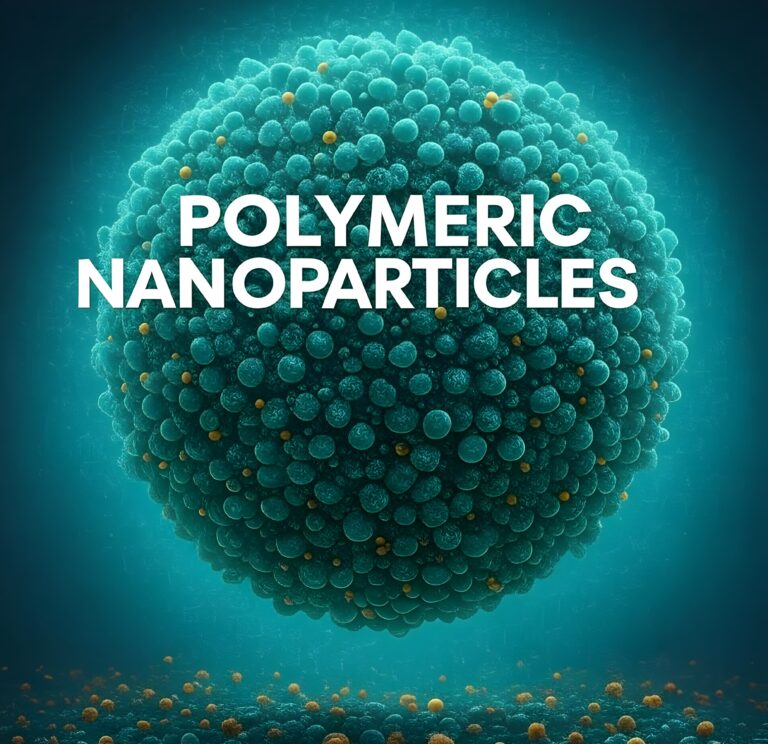

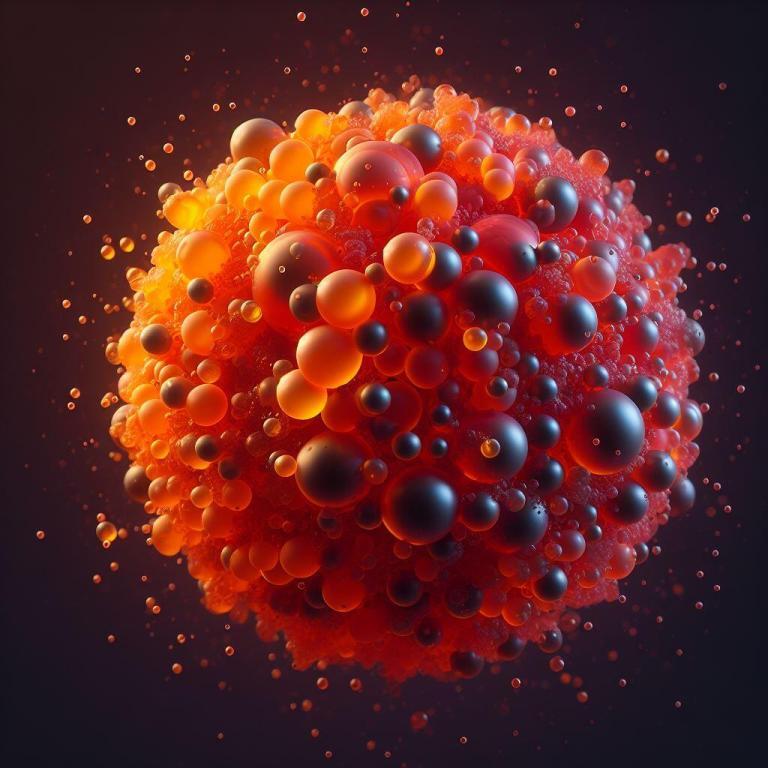

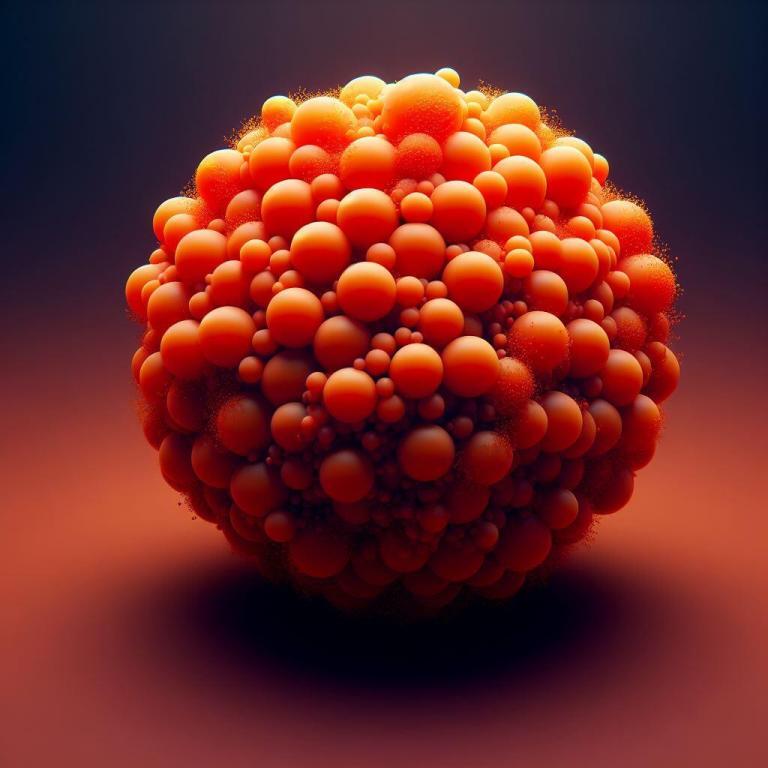

FAQs
Here are some frequently asked questions about Solid Lipid Nanoparticles
SLNs are submicron-sized carriers typically ranging from 50 to 1000 nm. They are composed of solid lipids that are solid at room and body temperatures. SLNs combine the advantages of lipid-based systems with those of polymeric nanoparticles, offering controlled release, protection of labile drugs from degradation, and improved drug bioavailability.
The manufacturing process of SLNs generally involves the following steps:
- Lipid component preparation: Selection and combination of lipids in specific ratios.
- Aqueous phase preparation: Preparation of the aqueous phase containing the active pharmaceutical ingredient (API).
- Mixing: High-shear mixing or high-pressure homogenization to combine the lipid and aqueous phases.
- Purification: Removal of excess surfactants and unencapsulated drugs.
- Concentration: Reduction of the solvent to achieve the desired concentration.
- Formulation: Addition of stabilizers and other excipients.
- Fill/finish: Final steps to prepare the product for distribution.
SLNs offer several advantages, including:
- Protection of the API: They protect sensitive drugs from chemical degradation.
- Controlled release: They can be engineered to release the drug in a controlled manner.
- Targeted delivery: They can be modified to target specific cells or tissues.
- Improved stability: They are more stable than liquid lipid-based systems.
Some challenges include:
- Particle size control: Ensuring consistent nanoparticle size distribution.
- Encapsulation efficiency: Maximizing the amount of drug encapsulated.
· Scale-up: Translating laboratory methods to industrial-scale production while maintaining product quality.
SLNs, like all pharmaceutical products, must comply with regulatory requirements, including those for Good Manufacturing Practice (GMP), safety, efficacy, and quality control. Regulatory filings must include detailed information on the manufacturing process, ingredients, and quality testing.
SLNs enhance drug delivery by:
- Increasing solubility: They can improve the solubility of poorly water-soluble drugs.
- Enhancing permeability: They can enhance the permeability of drugs across biological barriers.
- Reducing side effects: They can reduce the systemic side effects of drugs by targeted delivery.
SLNs should be stored at conditions that prevent the degradation of both the lipid matrix and the encapsulated drug. This typically involves protection from light, moisture, and extreme temperatures.
Characterization of SLNs involves determining their size, shape, surface charge, drug loading capacity, encapsulation efficiency, and release profile. Techniques such as dynamic light scattering (DLS), scanning electron microscopy (SEM), and differential scanning calorimetry (DSC) are commonly used.


